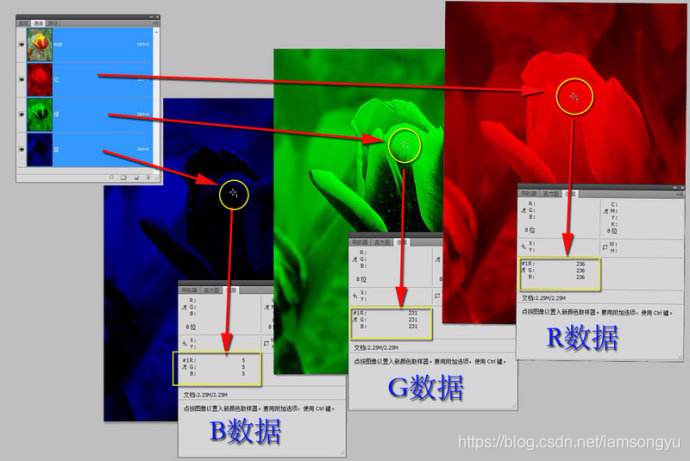在网上找资料的过程中,发现并没有特别细致的讲解分类图像和分类一维向量的做法,导致我捅咕了有几天才弄明白,可能使我比较菜吧......现在在这里记录一下。
首先需要明确,前文我们已经讲解了包装数据集的方法,但是注意,无论是图像还是向量数据,都是有固定格式的,因为我们在做卷积的时候有数据格式要求。使用的时候我们必须将自己的数据变换为指定的格式,而变换的方法无非numpy.array torch.from_numpy 香江列表转换为矩阵,再从矩阵转换为tensor,这其中的操作就是矩阵的操作,在上一篇中简单有一个例子,简单了解一下就可以,注意以下问题
- 矩阵维度必须满足卷积的输入
- label是有数据类型要求的,tensor可以直接使用.int() .long()等方法就行转换类型
- 变换时,可以使用矩阵的赋值和循环操作结合,完成指定格式的数据构建 具体看前一篇(神经网络 pytorch 数据集读取(自动读取数据集,手动读取自己的数据))
基础
数据分为两部分:原始数据,数据标签
图像数据要求的格式为【样本序号,维度,尺寸w,尺寸h】、
向量要求是【样本序号,维度,长度】
这里的维度代表的是。。。。举个例子一张彩色图像可以分为三个RGB通道
所以一张图像读取进来的数据是【维度,尺寸w,尺寸h】,在加上组成数据集的样本维度,就变为了【样本序号,维度,尺寸w,尺寸h】。
而对于一维向量来说,由于没有宽高,只有长度,所以就变为了
【样本序号,维度,长度】
实验
首先是图像的二维数据测试
conv1 = nn.Conv2d(3, 6, 5)
conv1 = nn.Conv2d(in_channels=3, out_channels=6, kernel_size=5)
这是二维卷积函数,可以看到输入要求3维度 输出6图 核大小5维在卷积中使用的是batch分组进行处理的,所以在图像的基础上,我们还需要再有一个维度
【batch,维度,尺寸w,尺寸h】,注意如果使用数据集的话,batch是不需要我们管的
我们创建数据
conv1 = nn.Conv2d(3, 6, 5)
input = torch.randn((3,15,15)) #这是一个图像的三维 尺寸
conv1(input)
# Expected 4-dimensional input for 4-dimensional weight [6, 3, 5, 5], but got input of size [3, 15, 15] instead
# 要求输入为四维 我们手动创建一个样本集
input = torch.randn((5,3,15,15)) # 五张图像 三维 尺寸
conv1(input)
tensor([[[[-0.3294, -0.4139, -0.2850, ..., 1.3533, -0.6759, 0.1333],
[ 0.3084, 0.1447, -0.1788, ..., 0.9002, 0.2388, 0.9239],
[ 0.0672, 0.2839, 1.3691, ..., -0.1531, -1.0619, -1.0429],
...,
[-0.2464, 0.4404, 0.6528, ..., 0.4497, -0.2516, -0.1859],
[-0.3036, 0.1986, 0.6850, ..., -0.1474, -0.3568, -0.1044],
[ 0.0053, 0.4006, -0.2252, ..., -0.0466, 0.0872, 0.0611]],
[[ 1.2968, -0.4136, -0.2831, ..., -0.1858, -0.9087, 0.5293],
[ 0.4907, 0.6914, 0.3149, ..., 0.3644, 0.5656, -0.8398],
[ 0.1517, -0.1849, -0.0562, ..., -0.5456, -0.4508, -0.6404],
..., 省略了
...,
[-0.0307, 0.5376, -0.8060, ..., -0.1753, -0.7272, -0.8466],
[-0.2170, -0.2148, -0.5993, ..., 0.0340, 0.3307, 0.0338],
[ 0.3770, 0.5640, 0.0672, ..., -0.1321, -0.7813, 0.2787]]]],
grad_fn=<ThnnConv2DBackward>)对于一维的学习来说,输入是三维的,【样本序号,维度,长度】,继续试验一下
conv1 = nn.Conv1d(in_channels=2, out_channels=5, kernel_size=3)
# 要求输入为二通道
input = torch.randn((4,2,12))
# 四个样本 二通道 长度12
conv1(input)
tensor([[[ 0.5587, 0.6236, -0.9632, 0.3872, -0.0721, 0.3657, -0.1207,
-0.0946, 0.3658, -0.3244],
[ 0.2307, -0.2126, -1.2743, -0.4488, -0.2530, -0.0273, -0.7402,
0.0616, -0.9748, -0.6859],
[-0.7817, -0.3664, -1.1842, -0.7359, 0.4219, 0.6737, -0.1494,
-0.0247, -0.2200, -0.1169],
[ 0.4604, -0.6700, 0.3021, 0.6606, 2.2227, 0.3312, 0.5341,
0.8271, -0.7024, 0.7300],
[ 0.0626, -0.4945, 0.9787, 0.0997, 0.4146, -0.6470, 0.6352,
-0.0103, -0.0971, 0.6143]],
............. 省略
[[-0.0005, 0.6630, 0.2095, 0.4185, 0.0364, 0.8880, 0.1139,
0.3172, -0.1049, 0.1099],
[-0.2716, 0.0824, -0.5943, 0.0037, -0.6148, 0.3952, -0.1688,
-0.3591, -0.6956, -0.5202],
[-0.7579, -1.2024, -1.1410, -0.3624, -1.0320, -0.2396, -0.5218,
-0.7605, -0.4535, -0.6400],
[ 0.0183, -0.9959, 0.3437, -0.0709, 0.3040, 0.4322, 0.0317,
0.1266, -0.0621, 0.7542],
[ 0.3895, -0.4234, 0.6149, -0.4937, 0.5438, -0.4094, -0.0073,
0.1984, 0.0270, 0.5017]]], grad_fn=<SqueezeBackward1>)二维学习中,主要使用的是
self.conv1 = nn.Conv2d(in_channels=1, out_channels=5, kernel_size=7, stride=2, padding=1)
self.fc1 = nn.Linear(2432,512)
F.max_pool2d(self.conv1(x), 2)
一维
self.conv1 = nn.Conv1d(in_channels=1, out_channels=5, kernel_size=7, stride=2, padding=1)
self.fc1 = nn.Linear(2432,512)
F.max_pool1d(self.conv1(x), 2)
附录
下面的就是一些常用的可能的部分,每个都有很多种选择,但前提可定是需要知道它有......
其中激活函数包括多种,用于处理输出形式,规范等
torch.nn.functional.threshold(input, threshold, value, inplace=False)
torch.nn.functional.relu(input, inplace=False)
torch.nn.functional.hardtanh(input, min_val=-1.0, max_val=1.0, inplace=False)
torch.nn.functional.relu6(input, inplace=False)
torch.nn.functional.elu(input, alpha=1.0, inplace=False)
torch.nn.functional.leaky_relu(input, negative_slope=0.01, inplace=False)
torch.nn.functional.prelu(input, weight)
torch.nn.functional.rrelu(input, lower=0.125, upper=0.3333333333333333, training=False, inplace=False)
torch.nn.functional.logsigmoid(input)
torch.nn.functional.hardshrink(input, lambd=0.5)
torch.nn.functional.tanhshrink(input)
torch.nn.functional.softsign(input)
torch.nn.functional.softplus(input, beta=1, threshold=20)
torch.nn.functional.softmin(input)
torch.nn.functional.softmax(input)
torch.nn.functional.softshrink(input, lambd=0.5)
torch.nn.functional.log_softmax(input)
torch.nn.functional.tanh(input)
torch.nn.functional.sigmoid(input)常用的就是relu什么的,实际上种类很多,还有各种改进,具体的看这位大佬的吧
https://www.jianshu.com/p/68bd249327ce,列举了几种样式
优化器的话也是有上十种,基于基类 Optimizer
随机梯度下降算法 SGD算法
torch.optim.SGD(params, lr=, momentum=0, dampening=0, weight_decay=0, nesterov=False)
平均随机梯度下降算法 ASGD算法
torch.optim.ASGD(params, lr=0.01, lambd=0.0001, alpha=0.75, t0=1000000.0, weight_decay=0)
AdaGrad算法
torch.optim.Adagrad(params, lr=0.01, lr_decay=0, weight_decay=0)
自适应学习率调整 Adadelta算法
torch.optim.Adadelta(params, lr=1.0, rho=0.9, eps=1e-06, weight_decay=0)
RMSprop算法
torch.optim.RMSprop(params, lr=0.01, alpha=0.99, eps=1e-08, weight_decay=0, momentum=0, centered=False)
自适应矩估计 Adam算法
torch.optim.Adam(params, lr=0.001, betas=(0.9, 0.999), eps=1e-08, weight_decay=0)
Adamax算法(Adamd的无穷范数变种)
torch.optim.Adamax(params, lr=0.002, betas=(0.9, 0.999), eps=1e-08, weight_decay=0)
SparseAdam算法
torch.optim.SparseAdam(params, lr=0.001, betas=(0.9, 0.999), eps=1e-08)
L-BFGS算法
torch.optim.LBFGS(params, lr=1, max_iter=20, max_eval=None, tolerance_grad=1e-05, tolerance_change=1e-09, history_size=100, line_search_fn=None)
弹性反向传播算法 Rprop算法
torch.optim.Rprop(params, lr=0.01, etas=(0.5, 1.2), step_sizes=(1e-06, 50))
大佬的很详细
https://blog.csdn.net/shanglianlm/article/details/85019633池化方法也有好几种
# https://blog.csdn.net/HowardWood/article/details/79508805
torch.nn.functional.avg_pool1d(input, kernel_size, stride=None, padding=0, ceil_mode=False, count_include_pad=True)
torch.nn.functional.avg_pool2d(input, kernel_size, stride=None, padding=0, ceil_mode=False, count_include_pad=True)
torch.nn.functional.max_pool1d(input, kernel_size, stride=None, padding=0, dilation=1, ceil_mode=False, return_indices=False)
torch.nn.functional.max_pool2d(input, kernel_size, stride=None, padding=0, dilation=1, ceil_mode=False, return_indices=False)
torch.nn.functional.max_unpool1d(input, indices, kernel_size, stride=None, padding=0, output_size=None)
torch.nn.functional.max_unpool2d(input, indices, kernel_size, stride=None, padding=0, output_size=None)
torch.nn.functional.lp_pool2d(input, norm_type, kernel_size, stride=None, ceil_mode=False)
torch.nn.functional.adaptive_max_pool1d(input, output_size, return_indices=False)
torch.nn.functional.adaptive_max_pool2d(input, output_size, return_indices=False)
torch.nn.functional.adaptive_avg_pool1d(input, output_size)
torch.nn.functional.adaptive_avg_pool2d(input, output_size)
